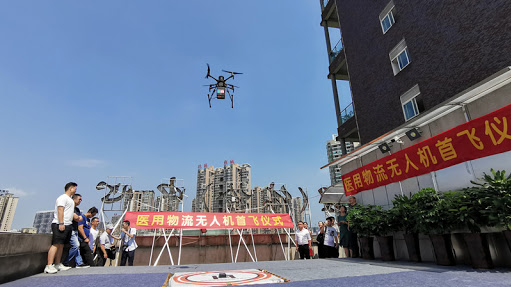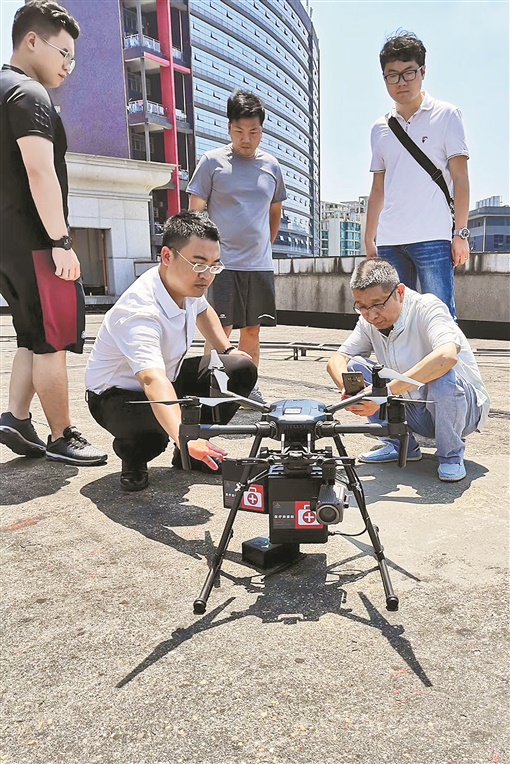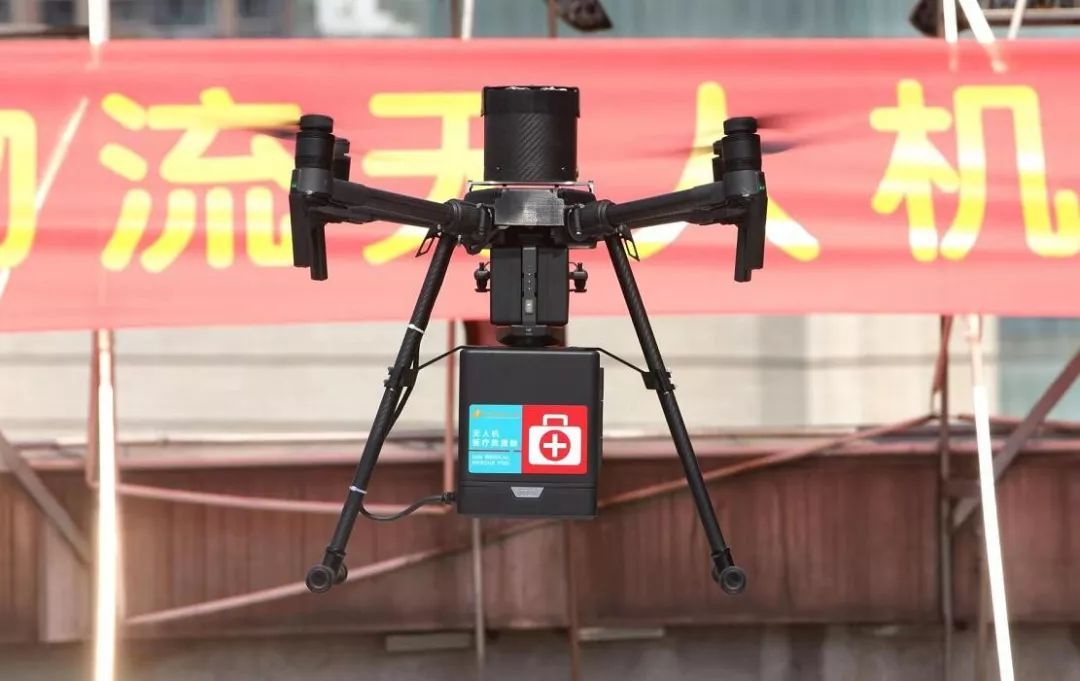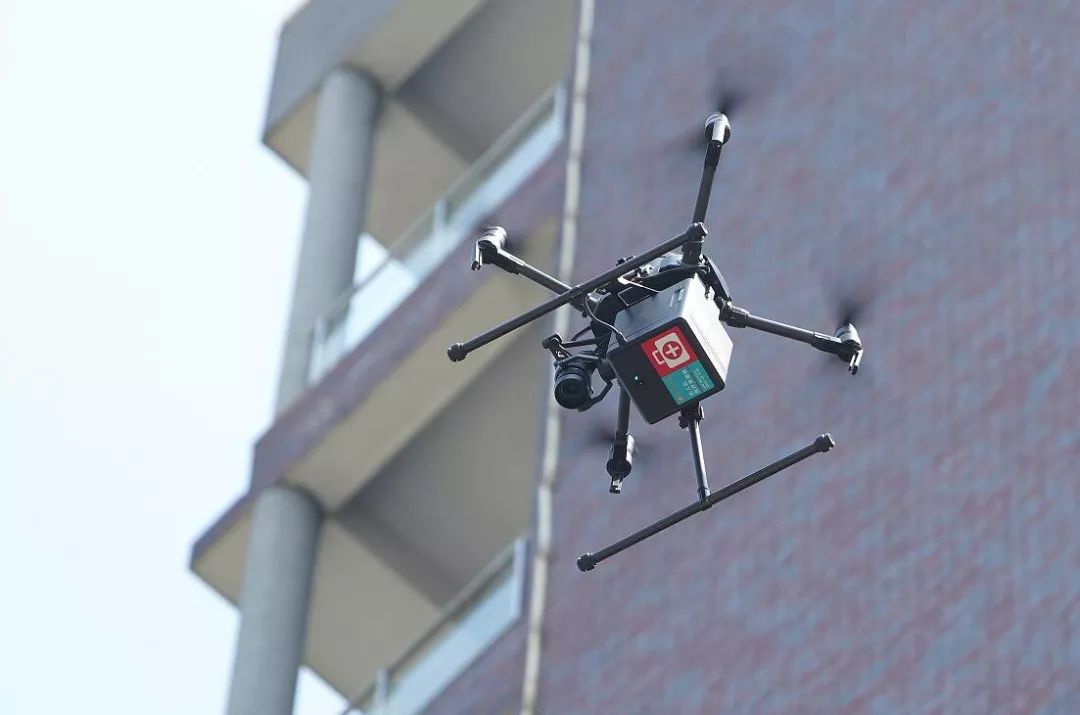The operating room sends a request to the pathology department, "Please pick up specimen on the apron of the roof." After receiving the samples, the drone takes off automatically. In just over a minute, it lands safely on the roof of the pathology specimen in tow, ready to be examined. Since the first such delivery succeeded in September 2019, drones have been used to deliver medical samples between buildings at the Second Affiliated Hospital of Nanhua University, central China's Hunan Province, more than 300 times. On average, the daily flights take just 70 seconds.

The first test flight of Tan's medical logistics drone at the Second Affiliated Hospital of Nanhua University in 2019. /Chinanews
The first test flight of Tan's medical logistics drone at the Second Affiliated Hospital of Nanhua University in 2019. /Chinanews
In the past, the hospital's pathological specimens, blood and other medical samples had to be manually delivered to the pathology department building for inspection, which would take at least 20 minutes. The medical logistics drones have significantly cut each specimen's travel time, earning patients in critical condition crucial minutes that could make the difference in their doctor's ability to save their lives in an emergency.
This advanced technology took 25-year-old Tan Jialong and his team two years to develop and implement. The team is currently working intensively on the second generation of medical logistics drones.

Tan Jialong (L) and his team conduct a test flight. /Chinanews
Tan Jialong (L) and his team conduct a test flight. /Chinanews
Tan started to play around with drones in college. He used to use drones to deliver gifts or create romantic surprises to make some money when he was a student. With the increasing popularity of drones in recent years, he quit his job in the medical industry in 2018 and established a company to focus on drone applications.
"Many medical workers often talked to me about the transportation problems of pathological specimens. The pathology department of general hospitals is always in different buildings with other departments. The pathological sections of tumor patients or patients in emergency cases need to be inspected as soon as possible. Medical workers are looking for a better way to save the delivery time," Tan said.

Drone transportation has cut the wait time for emergency patients in need of a quick consult from the pathology department. /Chinanews
Drone transportation has cut the wait time for emergency patients in need of a quick consult from the pathology department. /Chinanews
At the beginning of 2019, drone logistics and distribution had just started, and the error on automatic landing was about 10 meters. However, medical sample distribution requires precise landing because once the specimens are damaged, it would be irreparable.
"A lot of flight tests were required during the research and development process. We crashed nearly 30 drones," Tan explained. "In the end, we strictly controlled the landing error to within 10 centimeters."
His team now has two practical new model patents and 13 computer software copyrights.

The second generation of Tan's medical logistics drones with upgraded parachutes, airbags, battery life, etc. is currently being developed. /Chinanews
The second generation of Tan's medical logistics drones with upgraded parachutes, airbags, battery life, etc. is currently being developed. /Chinanews
The Second Affiliated Hospital of Nanhua University is the first hospital in China to use the unmanned aerial vehicle (UAV) logistics systems. According to Tan Jialong, the second generation of medical logistic drones is expected to be available in September this year, with upgraded parachutes, airbags, positioning devices, battery life, among other things.